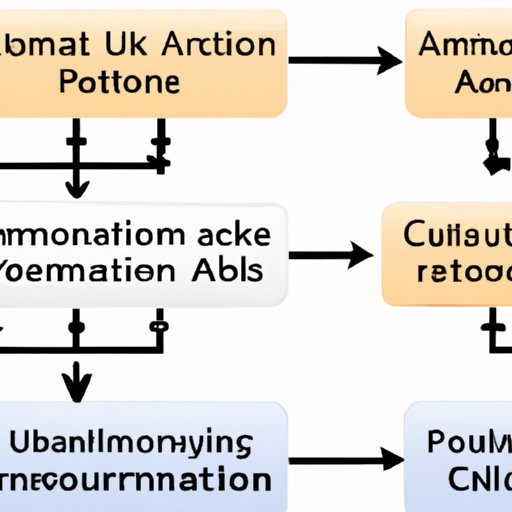Introduction
An automation framework is a set of tools and processes used to automate and streamline software development and testing tasks. It is designed to provide a structured approach that can be used to develop and test applications quickly and accurately. This article will explore the advantages of using an automation framework and discuss best practices for implementation.

Explaining the Benefits of Automation Frameworks
Automation frameworks offer many benefits, including improved accuracy and reliability, increased speed and productivity, and reduced manual effort. Automation frameworks allow developers and testers to create reliable tests without having to manually code them each time. They also reduce the amount of time it takes to complete tests, as they can be run quickly and repeatedly.
By automating tests, organizations can save money by reducing the need for manual labor and increasing the efficiency of their tests. Automation frameworks also make it easier to identify issues quickly and accurately, allowing organizations to address them sooner rather than later.

Comparing Different Types of Automation Frameworks
There are two main types of automation frameworks: structured and unstructured. Structured automation frameworks are based on a predetermined set of rules, while unstructured frameworks are more flexible and allow users to customize the framework according to their needs. Common automation frameworks include keyword-driven, data-driven, behavior-driven, and model-based testing frameworks.
Understanding the Elements of an Automation Framework
An automation framework consists of several key components, including a scripting language, a test harness, and a test library. The scripting language is used to write the scripts that control the test execution, while the test harness is used to execute the scripts. The test library stores the test scripts and data needed for the tests. Data-driven automation frameworks are especially useful as they allow tests to be written once and then reused multiple times with different sets of data.
Describing the Advantages of Using an Automation Framework
Using an automation framework has many advantages, such as cost savings, time savings, and quality assurance. Automated tests are often much faster and more accurate than manual tests, so organizations can save time and money by running automated tests instead of manual ones. Automation frameworks also help ensure quality by providing a consistent, repeatable process for testing.
In addition, automation frameworks can help improve the scalability of applications by making it easier to add new features and functionality. Automation frameworks also enable teams to reuse code, which can save time and effort by eliminating the need to rewrite code for each new test or feature.

Examining How Automation Frameworks Improve Efficiency
Automation frameworks can also help improve the efficiency of tests. By automating error handling, automation frameworks can prevent errors from occurring in the first place. Automation frameworks also make it easier to debug tests, as they provide detailed information about what went wrong when a test fails.
Additionally, automation frameworks make it possible to scale up tests quickly and easily. This makes it easier to increase the number of tests that are being run, which can lead to improved performance and fewer defects.

Analyzing the Cost Savings of Automation Frameworks
The cost savings associated with using an automation framework can be significant. Automation frameworks can reduce the costs associated with manual testing, as they require less labor and resources. Additionally, automation frameworks can help reduce the costs associated with debugging, as errors can be identified and fixed quickly.
Furthermore, automation frameworks can be more cost-effective than other types of testing frameworks. For example, a data-driven automation framework may be more cost-effective than a keyword-driven one, as it requires less manual coding and maintenance.
Outlining Best Practices for Implementing Automation Frameworks
When implementing an automation framework, it is important to plan for success. Organizations should determine what type of framework is best for their needs, and then create a timeline for implementation. Additionally, organizations should plan for testing and debugging, as well as for ongoing maintenance and updating.
It is also important to ensure that all team members understand how to use the automation framework, as this will ensure that tests are run correctly and efficiently. Finally, organizations should consider using a third-party service to manage their automation framework, as this can help ensure that tests are properly maintained and updated on an ongoing basis.
Conclusion
Automation frameworks offer many advantages, including improved accuracy, speed and productivity, cost savings, time savings, and quality assurance. They also help improve the scalability of applications and enable teams to reuse code. When implementing an automation framework, it is important to plan for success and ensure that all team members are familiar with the framework.
In conclusion, automation frameworks are a powerful tool for improving the accuracy, speed and productivity of software development and testing tasks. By taking advantage of the benefits of an automation framework, organizations can save time, money and effort, and ensure that their applications are of the highest quality.
(Note: Is this article not meeting your expectations? Do you have knowledge or insights to share? Unlock new opportunities and expand your reach by joining our authors team. Click Registration to join us and share your expertise with our readers.)
